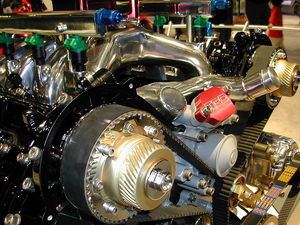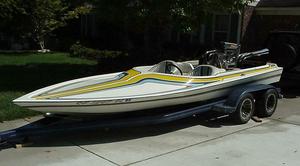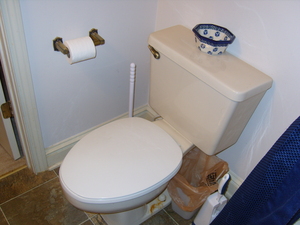Small outboard motors are especially useful to fishermen for trolling and for small utility boats and dinghies. As with any boat motor reliability is important and to help insure that periodic maintenance is imperative. On occasion a problem will develop which, depending on the nature, may or may not require immediate repair. If an outboard motor is running roughly or hard to start the problem can probably wait to be resolved at some point where it becomes enough of a nuisance to provoke repair on the part of the owner.
If, on the other hand, the engine is overheating, repair is required immediately since serious, irreversible, damage can occur. To understand the nature of the problem we will look at an older, small 3.9 hp Mercury outboard. The engine is water-cooled and therefore should always be run when the lower unit is in the water whether it is on a boat or in a water test barrel. If the flow of water to the power head ceases, due to any reason, the motor can, and most likely will, overheat. When a reciprocating engine overheats the metals in the cylinders, cylinder head and engine block heat and expand at different rates. This can lead to the engine seizing up and stopping or scoring of the cylinder walls with a resulting loss of compression. These are examples of irreversible changes and can be very costly and sometimes impossible to resolve depending on the age of the motor and the availability of parts. As an owner you should be aware of how your motor sounds and acts when it is running normally so that if any symptoms arise you will be aware of them and can initiate the repair of your outboard motor.
The Mercury engine in this case is cooled by an impeller type water pump located in the lower unit in the vicinity of the propeller. The typical water pump failure mode is for the rubber impeller to break leading to the pump no longer capable of circulating cooling water. When this happens the power head will heat up in use leading to the failure modes previously mentioned. When operating the engine if the performance becomes sluggish, or you feel heat radiating from the power head you should shut the engine off immediately and investigate further. You should be aware from previous observation that on the upper back or side of the engine is a small tell tale outlet that emits a stream of water when the pump is working correctly and the water path is not obstructed. If the water ever ceases to flow from that hole when the engine is operating stop the motor immediately and investigate further.
The water flow can stop due to plugged inlet screens found in the lower unit of the engine. A disintegrating impeller can also emit chunks of rubber that can block the flow of cooling water. These things as well as the condition of the impeller should be investigated if you suspect overheating.
To inspect the impeller remove the engine cowling, disconnect the spark plug wire and remove the spark plug. This will prevent accidental firing of the engine and make it easier to rotate the crankshaft. Leave the engine in neutral and remove the two large bolts holding the bottom of the lower unit to the lower part of the engine. These bolts are in the area of the prop. With the bolts removed, gently lower the lower unit and remove it from the engine. The long drive shaft will be attached along with a shorter gearshift shaft. Position the unit upright blocking it with wood in a vise to hold it steady. The drive shaft is seen to enter a small cup like cover held in place by several bolts. Remove these and lift the cover, removing it from the shaft. This will reveal the water pump innards. There will be a circular cup perhaps ¾” deep and in the cup should be a rubber paddle like part with multiple flexible arms. This can be lifted out of the cup and off of the crankshaft. When this impeller fails most often it is found that one or more of these arms has broken off. You should look for all the arms so that you can reconstruct the impeller to make sure that you have all the pieces removed. If they can’t be accounted for it is possible they are or will block the cooling line that is the shorter pipe that comes out of the pump in a vertical position.
Once the pieces are recovered use a compressor to verify that the cooling line going up to the engine block is open. If it is not open there may be a more serious problem that merely replacing the impeller will not solve. The water pipe from the water pump goes up to the power head. Where it interfaces with the power head there is a plastic bushing. If the engine has gotten too hot this bushing will melt and seal off the water path. To access the bushing for replacement requires unbolting the power head, replacing the bushing and installing a power head gasket. This repair procedure is beyond the scope of this article.
Assuming the water line is open and the parts of the impeller have been removed it is time to install a new impeller. You’ll notice the impeller hub has a keyway, which must be installed such that it meshes with the pin on the power shaft. Make sure all the arms of the impeller are seated properly and bolt down the cap. Pay attention to the torque on this head since in most models it is plastic and over torquing will deform and damage the top of the water pump assembly.
After the water pump is sealed install the lower unit back on the engine. Make sure the gearshift rod is engaged with the mating shift tube up inside the lower unit. In addition the power shaft and the water pipe must be properly aligned and inserted in their mating receptacles. Once done verify the engine shifts properly and finally apply the proper torque to the two nuts holding the lower unit in place.
Repairing the water pump by replacing the impeller is not a difficult task however it does require a methodical, careful approach. If done properly the new impeller will give you many years of service.




